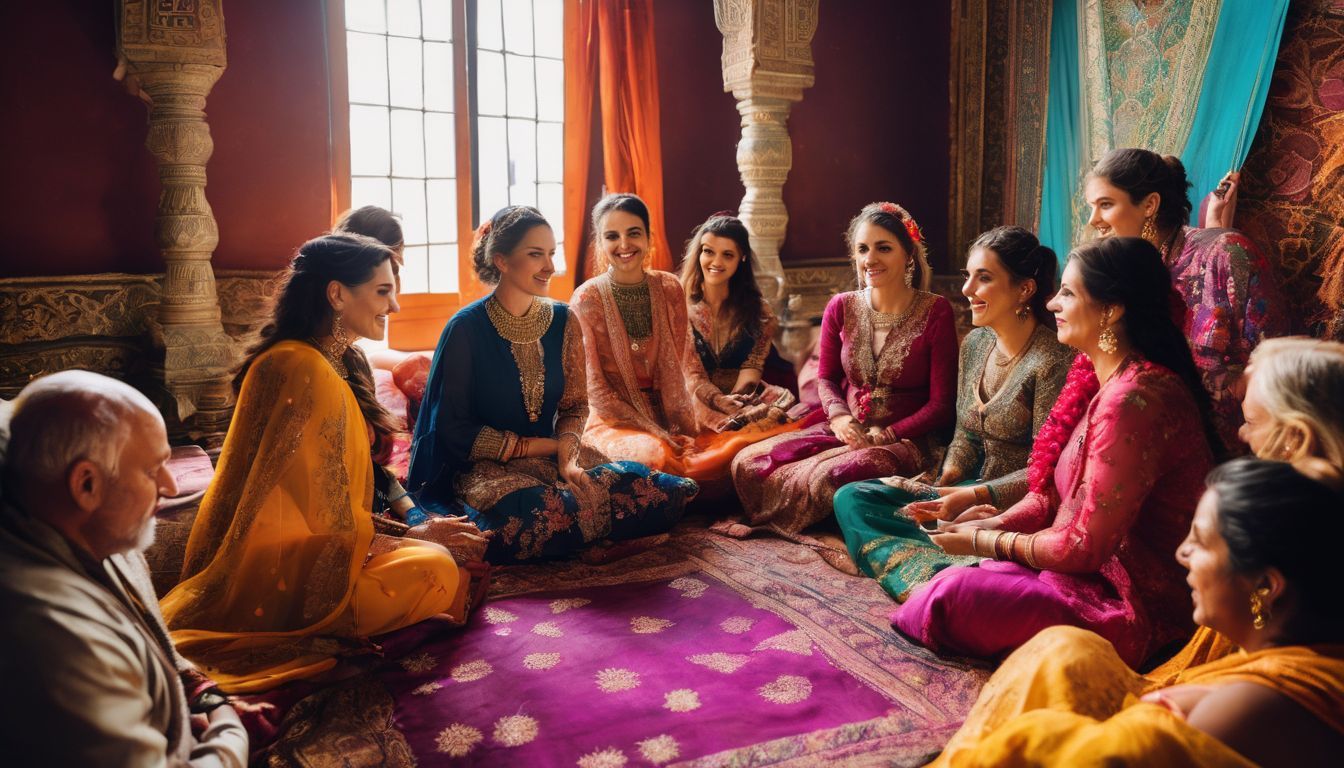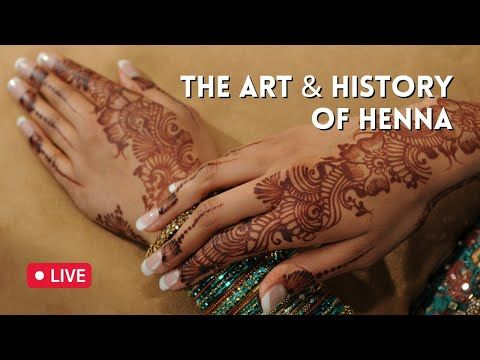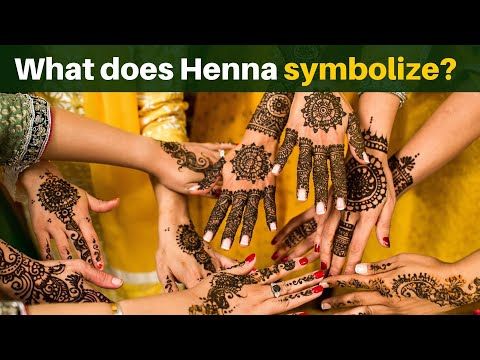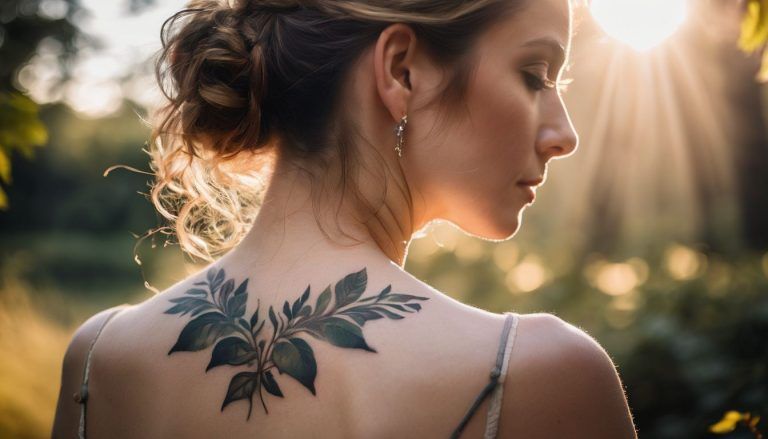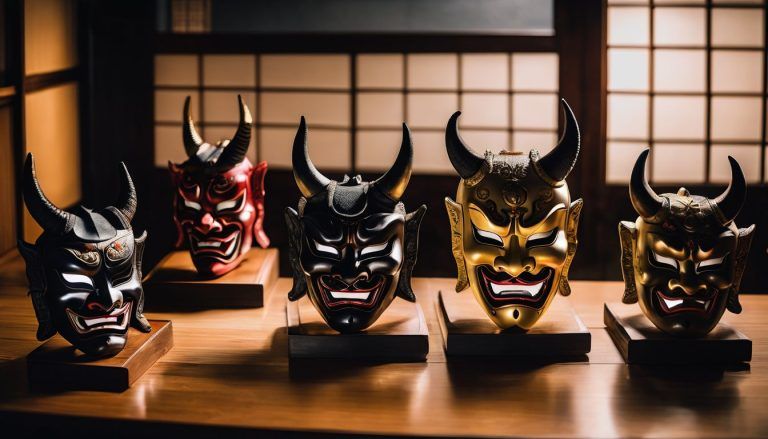The Cultural Significance and History of Henna Art
Have you ever gazed at the intricate patterns of henna art and wondered about its deeper meaning? Henna’s use in cultural celebrations has spanned centuries, embodying joy and beauty across many religions.
This blog delves into the vibrant history and traditions of henna art, helping you appreciate each delicate swirl’s significance. Discover this ancient craft‘s secrets with us!
Key Takeaways
- Henna art has a rich historical background, with origins in ancient regions such as North Africa, the Middle East, South Asia, and the Roman Empire. It has been used for centuries not only for its beauty but also to signify important life events across many cultures.
- The practice of henna application varies regionally, with different traditions signifying distinct cultural meanings. For example, South Asian bridal mehndi ceremonies use intricate patterns that symbolize joy and good luck while in North Africa bold geometric designs represent prosperity.
- Natural henna is made from plant leaves and is considered safe when free from additives like PPD found in black/brown henna products which can cause allergic reactions; regulatory measures help ensure product safety.
- There are several resources available for learning about henna design including workshops, online tutorials, books or guides on the subject matter as well as mentorship by professional artists.
- Popular designs include floral patterns that denote happiness and beauty; geometrics representing harmony; paisley motifs symbolizing fertility; mandalas reflecting spirituality; and peacock features exemplifying grace. These elements have deep-rooted symbolism within various communities around the world.
Origins and History of Henna Art
The origins and history of henna art date back to ancient times, with its etymology and cultural significance rooted in various regions such as North Africa, the Roman Empire, South Asia, the Middle East, and the Western region.
Its historical use as a form of body art reflects different cultural traditions and symbolism in art across diverse societies.
Etymology and cultural significance
Henna gets its name from the Arabic word ‘ḥinnā’. This natural dye, derived from the leaves of the henna plant, has a history as rich and deep as its color. Cultures around the globe have embraced henna for thousands of years, not just for beauty but as a marker of significant life events.
Bridal mehndi ceremonies are particularly famous in South Asia, where intricate patterns symbolize joy and good luck.
Across different cultures, henna holds a place of honor in many religious traditions including Hinduism and Islam. Its cultural significance is evident during festivals like Diwali and Eid where it adorns hands and feet in elaborate designs.
Not only does it carry symbolic weight representing prosperity and happiness, but also serves as an ancient form of expression that transcends geographical boundaries to connect people through artistry and tradition.
Henna’s coolness provided relief in hot climates long before modern conveniences, showcasing its practical uses beyond aesthetic appeal.
Historical use in different regions (North Africa, Roman Empire, South Asia, Middle East, Western region)
Having explored the etymology and cultural significance of henna art, let’s delve into its historical use in various regions.
- North Africa: Henna was used for cosmetic purposes in Ancient Egypt and other parts of North Africa, known for intricate and symbolic designs representing prosperity, love, loyalty, fertility, and good luck.
- Roman Empire: Henna was utilized for cosmetic purposes during the Roman Empire period as part of the body adornment practices.
- South Asia: In South Asia, henna has a deep-rooted cultural significance and is a significant part of traditional celebrations such as weddings and religious festivals.
- Middle East: Henna is an integral part of Middle Eastern art and culture, with elaborate designs symbolizing joy, beauty, and spirituality.
- Western Region: Over time, henna has spread to the Western region as an authentic ancient art form gaining popularity among people from different cultures.
Application and Use of Henna
The application of henna involves a traditional process of preparation and staining the skin or hair with natural dyes. Different regions have their own specific traditions for using henna as body art, making it a versatile and culturally significant form of temporary body decoration.
Preparation and application process
Henna paste is made from the leaves of the henna plant, mixed with water or other liquids such as lemon juice. The paste is then left to rest for several hours to release the dye.
- The artist then carefully applies the henna paste onto the skin using a cone or a small plastic bottle with a fine tip, creating intricate designs.
- Once applied, the henna is left to dry on the skin for several hours to allow the dye to stain the skin.
- After drying, the dried paste is gently removed, leaving behind an orange stain that darkens over 24-48 hours into a reddish-brown color.
- To seal in the color and ensure longevity, heat can be applied directly over the design by carefully hovering hands over it or using a heated object.
Traditional uses on body and hair/eyebrows
After the preparation and application process, henna has been traditionally used for adorning the body, hair, and eyebrows. Body art with henna is a common practice in various cultures around the world.
Intricate designs are applied to hands, feet, and other body parts as part of cultural celebrations and rituals. Additionally, henna is often used to dye hair or color eyebrows naturally.
The cooling properties of henna also make it popular for soothing scalp irritation.
Regional traditions of henna as body art
Henna as body art holds diverse regional traditions. In North Africa, henna designs are bold and geometric, often with floral patterns reflecting the desert landscapes. These designs serve as a form of self-expression and are an integral part of cultural celebrations.
In South Asia, intricate mehndi designs adorn the hands and feet of brides during wedding ceremonies. The application is accompanied by rituals symbolizing love, joy, and prosperity in marriage.
Additionally, in the Middle East, henna is intricately woven into the fabric of celebrations such as Eid al-Fitr and Eid al-Adha, enriching these occasions with vibrant symbolism.
In Western regions, henna has gained popularity as a form of temporary body art for festivals and gatherings. This modern interpretation intertwines with ancient practices to create new designs that appeal to a global audience.
Health Effects and Regulation of Henna
Henna application can have potential health risks, including allergic reactions and skin irritation. Regulatory measures are in place to ensure the safety of henna products, and different varieties such as natural, neutral, and black/brown henna offer varying levels of risk.
Potential health risks
Henna application can pose potential health risks, especially if the quality and origin of the henna are not carefully considered. Some individuals may experience allergic reactions to natural henna due to its active ingredient lawsone, causing redness, itching, or swelling at the site of application.
Additionally, black henna products often contain a chemical called para-phenylenediamine (PPD), which can cause severe skin reactions and even lead to blistering or scarring. It’s important to be cautious when using henna and ensure that you are using high-quality natural henna from trusted sources to minimize these health risks.
Regulatory measures aimed at ensuring safe henna use include labeling requirements for packaged products and restrictions on the use of PPD in cosmetic products in some regions. When choosing a professional artist for applying bridal or decorative henna tattoos, it is essential to inquire about the ingredients they use and their safety practices.
Regulatory measures
Regulatory measures for henna art vary by region and country. In the United States, the FDA regulates henna as a cosmetic product, ensuring that it is safe for use on the skin. However, there have been reports of black henna products containing high levels of para-phenylenediamine (PPD), which can cause severe allergic reactions.
This has prompted regulatory agencies to issue warnings about using black henna and to encourage consumers to only use natural or neutral-colored henna products.
Ensuring the safety of henna products is crucial in preserving the cultural significance and history of this ancient art form while protecting consumers from potential health risks related to harmful chemicals.
Different varieties of henna (natural, neutral, black/brown)
When discussing henna, it’s important to recognize the different varieties available, which include natural, neutral, and black/brown henna. Each type serves different purposes and has its specific characteristics. Below is a table summarizing these varieties:
| Type of Henna | Description | Uses | Notes |
|---|---|---|---|
| Natural Henna | Made from the leaves of the henna plant, producing a red-brown dye. | Traditionally used for body art due to its cooling properties and natural dye. | Considered the safest form of henna. It can last from one to three weeks. |
| Neutral Henna | Created from the stems and leaves of the henna plant but does not dye the skin. | Often used as a hair conditioner and scalp treatment. | Does not color hair or skin but provides the health benefits of henna. |
| Black/Brown Henna | A mix that sometimes contains other ingredients to alter the dye color. | Primarily used to achieve darker shades on hair and skin. | Can contain harmful additives like PPD, which can cause skin reactions. |
Natural henna aligns with the cultural significance and history that trace back through various religions and traditions. Neutral henna, while not used for decoration, still plays a role in personal care rituals. Black/brown henna, often commercial, caters to modern preferences for darker shades but may pose health risks due to added chemicals. It’s vital to choose the right henna type according to the intended use, while also considering the cultural traditions and health implications associated with each variety.
Caring and Removing Henna Tattoos
Proper aftercare for henna tattoos, tips for removing henna tattoos, and common placement and costs are important aspects to consider when enjoying this beautiful art form. If you want to learn more about the cultural significance and history of Henna Art, keep reading!
Proper aftercare for henna tattoos
To ensure the longevity and vibrancy of your henna tattoo, follow these aftercare tips:
- Gently dab a mixture of lemon juice and sugar onto the dried henna design to enhance its color and longevity. This traditional aftercare technique adds a natural shine to the tattoo.
- Avoid contact with water for at least 12 hours after application to allow the dye to fully set into the skin. Moisture can cause the henna paste to smudge or blur.
- Protect your henna design from excessive friction and rubbing, especially during the first day after application, as this can cause premature fading.
- Apply a thin layer of balm or natural oil, such as coconut or olive oil, over the dried henna design to protect it from excessive shedding and promote longevity.
- Keep your henna design dry whenever possible, as exposure to prolonged moisture may cause premature fading and dullness.
- Avoid using soaps or lotions directly on the henna design, especially for the first few days after application, as this can fade the color prematurely.
- Regularly moisturize the area around your henna tattoo with a non – alcoholic lotion or cream to keep your skin nourished and prevent premature flaking of the design.
Tips for removing henna tattoos
After ensuring proper aftercare for henna tattoos, it’s important to take the right steps for removing them. Here are tips to effectively remove henna tattoos:
- Lemon and sugar scrub: Create a paste with lemon juice and granulated sugar to gently exfoliate the skin and fade henna stains.
- Olive oil or coconut oil: Apply these oils to the henna-stained areas to help loosen the pigment from the skin.
- Warm water soak: Soak the henna tattooed area in warm water for several minutes to soften and loosen the henna pigment.
- Exfoliating gloves or loofah: Gently scrubbing the area can help fade the henna stain over time.
- Baking soda paste: Mix baking soda with water to create a gentle abrasive paste for removing henna stains.
- Avoid chlorine exposure: Chlorine can darken and set henna stains, so avoid swimming in chlorinated pools until the tattoo fades.
Common placement and costs
After learning about the tips for removing henna tattoos, it’s interesting to note that common placement of henna art varies widely. The most popular areas for applying henna designs include the hands, forearms, feet, and lower legs. In some cultures, intricate henna patterns are also applied on the back, shoulders, and stomach region. Additionally, when it comes to costs associated with getting a henna tattoo or design, pricing can depend on factors such as the intricacy of the design and the experience level of the artist. Generally speaking though, smaller and simpler designs are more affordable compared to larger and highly detailed ones.
Whether it’s for a special occasion like weddings or cultural celebrations like Eid or Diwali, many individuals opt for having their hands adorned with beautiful traditional henna designs. While considering getting a temporary henna tattoo done may vary depending on personal preference and regional traditions.
Learning and Appreciating Henna Art
Explore the beauty and significance of henna art through resources for learning henna design, popular designs, and the cultural heritage of this traditional body adornment. Immerse yourself in the history and symbolic patterns of henna application techniques to gain a deeper appreciation for this ancient cultural practice.
Resources for learning henna design
If you want to learn the art of henna design, here are some resources to help you get started:
- Local Workshops: Many communities offer classes or workshops where you can learn from experienced henna artists. Check with local cultural centers, art studios, and event organizers for upcoming opportunities.
- Online Tutorials: There are numerous online platforms that provide step-by-step tutorials on henna application techniques and popular designs. You can explore these resources at your own pace and convenience.
- Books and Guides: Look for books specifically dedicated to henna art. These resources often provide historical context, design inspirations, and practical tips for mastering the art of henna.
- Henna Conventions: Consider attending henna conventions and festivals where you can immerse yourself in the world of henna art, learn from experts, and connect with fellow enthusiasts.
- Mentorship Programs: Some experienced henna artists offer mentorship programs or one-on-one coaching sessions to help aspiring artists hone their skills and develop their unique style.
- Practice Kits: Invest in a beginner’s henna kit that includes all the necessary supplies along with instructions for practice. Hands-on experience is essential for mastering the art of henna design.
Popular henna designs
Henna artists around the world have developed a wide range of popular designs, each with its own significance and beauty. Some of these popular henna designs include:
- Floral patterns: Often symbolizing joy, happiness, and beauty, floral designs are common in henna art and can be adapted to suit any style or size.
- Geometric patterns: Geometric shapes are used to create intricate and mesmerizing designs that reflect balance, harmony, and unity.
- Paisley motifs: This teardrop-shaped design is a classic in henna art, representing fertility, luck, and the tree of life in many cultures.
- Mandala designs: Symbolizing the universe and spirituality, mandalas are intricate circular patterns that draw the eye into their mesmerizing symmetry.
- Peacock motifs: The majestic peacock is often featured in henna art to symbolize beauty, grace, and pride.
The beauty and significance of henna art.
Henna art is not only visually stunning but also holds deep cultural significance. The intricate designs are a testament to the rich heritage and traditions of the communities that practice this art form.
These designs often incorporate meaningful symbols representing joy, love, loyalty, fertility, prosperity, and good luck. Henna art has transcended time and geography, spreading from its origins in North Africa and South Asia to become a global form of expression and celebration.
Furthermore, henna’s association with various religious celebrations underscores its symbolic importance in different cultures worldwide. It serves as a visual representation of the unity and shared values among diverse religious communities.
The beauty of henna art lies not just in its aesthetic appeal but also in the stories it tells about history, tradition, faith, and cultural identity.
Conclusion
In conclusion, henna art holds deep cultural significance and historical roots across various traditions. Its intricate designs serve as symbols of joy and prosperity in many religious and cultural celebrations.
The application, beauty, and legacy of henna art continue to captivate people around the world. Learning about the rich history and cultural importance of henna art enhances our appreciation for this ancient form of body adornment.
Appreciating the depth of meaning behind traditional henna designs adds a layer of understanding to its timeless allure.
FAQs
1. What is the historical significance of henna art?
The historical significance of henna art lies in its ancient cultural practices as traditional body art, often used for ritualistic body adornment and celebrating cultural heritage.
2. Can henna be considered a temporary tattoo?
Yes, henna is a form of temporary tattoo that stains the skin with intricate designs, widely known as bridal henna during weddings especially in African and other cultures.
3. How does Jagua relate to Henna Art?
Jagua is another type of natural dye used like henna to create temporary tattoos with deep blue or black coloration, adding diversity to traditional art forms.
4. Is Henna just for decoration, or does it have deeper meaning in culture?
Henna serves both as decorative body art and carries rich symbolism within cultural rituals; it’s deeply embedded in the historical context of many societies around the world.

